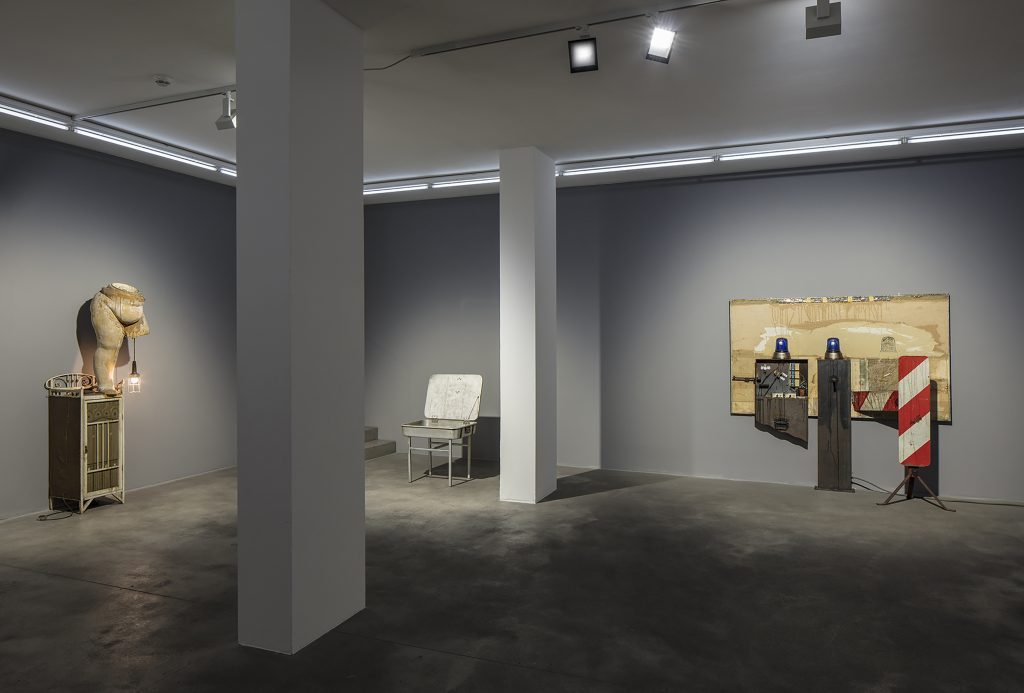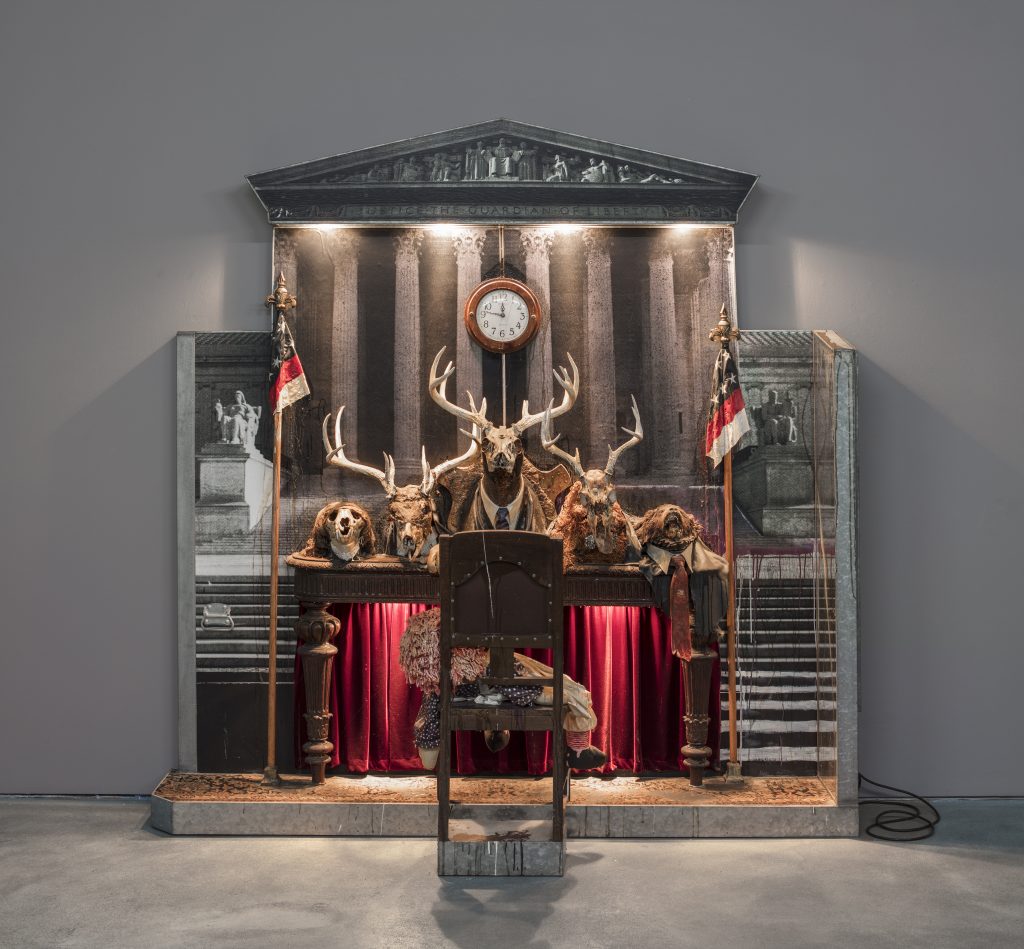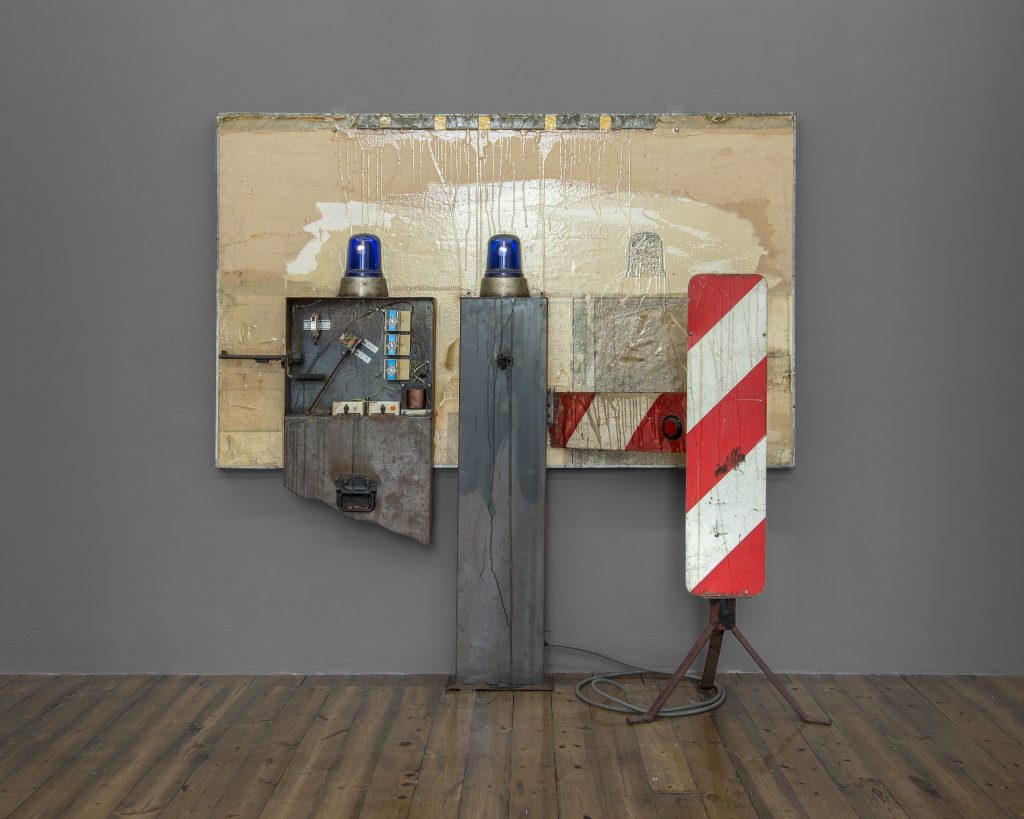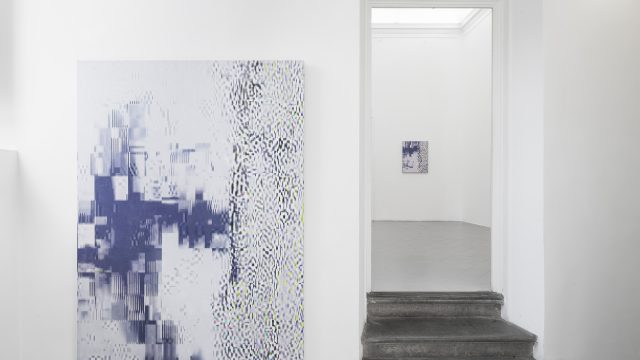Sprüth Magers is pleased to present Edward and Nancy Kienholz: A Selection of Works from the Betty and Monte Factor Family Collection . The exhibition, which has traveled from the London gallery where it was on view in early 2016, encapsulates both the friendship and patronage between the artist and two of his most steadfast collectors, Betty and Monte Factor. The twinned exhibitions in London and Berlin not only provide a glimpse of rarely seen pieces by one of the most important artist duos of the twentieth-century, but also an historic record of the Factors’ patronage of early contemporary art in Los Angeles.
Ed Kienholz and Nancy Reddin Kienholz are celebrated for their installations and sculptural assemblages that are controversial, graphic, and deeply critical of contemporary politics. Their large-scale, freestanding tableaux environments, built out of materials salvaged from junkyards and alleyways, survey the difficult truths of modern life often overlooked by artistic representation, including illegal abortion, prostitution, racism, and mental illness. In 1973, the couple moved to Berlin and had a deep and longstanding connection to the city, regularly visiting its shops and flea markets to find objects for their thought-provoking installations.
Kienholz began his career as a painter amidst the burgeoning Los Angeles art scene of the late 1950s. In 1957, with the curator Walter Hopps, he co-founded the celebrated Ferus Gallery that soon became the city’s epicenter of avant-garde art. He spent the 1960s developing his freestanding sculptural works into increasingly monumental tableaux, which quickly gained international renown. In 1972, he met his wife and collaborator Nancy Reddin, initiating a long and fruitful working relationship that lasted the rest of his lifetime. They established studios in both Berlin and Hope, Idaho – not far from his hometown and close to his friends Betty and Monte Factor.
In direct preparation for their life-sized environments, the Kienholzes made smaller assemblages that echo both the subject matter and structure of the larger installations and exist as equally compelling works themselves. Ed called these ‘drawings’ and, as preliminary studies, they played an integral part in the production of the full-scale works. This exhibition brings together several ‘drawings’, all related to major works by the Kienholzes. In addition, it presents early paintings – one with moving parts that presages Kienholz’s later three-dimensional endeavors – and an example from an important series of television sculptures from the late 1960s.
In Drawing for Five Car Stud (1969–72), Kienholz reproduces an image of his large-scale installation Five Car Stud, which he places into a car door window as if the viewer were watching the horrific scene from their automobile. This controversial work, first exhibited at Documenta in 1972 and shown only a few times since, details a violent episode of contemporary racism in which a black man is restrained and castrated by a group of white assailants. Kienholz explained that the victim has been singled out by the perpetrators for drinking in the company of a white woman. She hides in one of the cars, vomiting. It is perhaps also her position that viewers occupy in Drawing for Five Car Stud.
Other drawings within the exhibition correspond to works including Barney’s Beanery (1965), in the collection of the Stedelijk Museum, Amsterdam; Still Live (1974), a major work about risk and contingency that was once banned by the German police; and A Portable War Memorial (1968), a work denouncing war and US international policy that is now in the collection of Museum Ludwig, Cologne. The Berlin presentation of this exhibition also includes two major additional works that demonstrate the Kienholzes’ longstanding use of this innovative preparatory drawing practice: the riveting Drawing for the Caddy Court (1986), which serves as an ironic indictment of the US Supreme Court in the years of Ronald Reagan’s presidency; and Drawing for Hoerengracht No. 1 (1984), whose empty-eyed mannequin head and electrified red lights reflect the forlorn, yet noble, figures of Amsterdam’s well-known prostitution district.
The Factors’ relationship with the work of Ed Kienholz dates back to their early involvement with liberal politics and, by extension, the Los Angeles art scene. In the 1960s, through Hopps and the Ferus Gallery, they became staunch supporters of avant-garde contemporary art and lifelong friends of Ed, even appearing as cast figures in his major installation The Art Show (1974), which he produced and premiered in Berlin. In addition to numerous sculptures by the Kienholzes, the Factor family collection includes works by Robert Irwin, Larry Bell, Craig Kauffman, Ed Moses, John Altoon, Richard Jackson, Andy Warhol, Kenneth Price, and many more.
Describing how the Factors became patrons of Ed Kienholz, Monte recalls that in the early 1960s he and his wife scraped together a small amount of cash, as well as some clothes and an old boat, to buy one of the artist’s works. Some years later they purchased The Illegal Operation (1962), a powerful and important piece that was acquired by the Los Angeles County Museum of Art in 2008, but which the Factors had kept stored in a spare room for many years. In Monte’s words: “For thirty-five years we lived in homes and in a world irradiated by the art of Ed, Ed and Nancy, and now, Nancy […] For us, Ed and Nancy found nobility, power and grace in the ordinary. They brought new levels of compassion and beauty into our lives.”
Sprüth Magers (press release)


Wood cloth, bird, fan, light, plaster case, paint and polyester resin 200,7 x 55,9 x 61 cm, 79 x 22 x 24 inches
© Edward Kienholz Estate and Nancy Reddin Kienholz
Courtesy Sprüth Magers. Photography by: Kris Emmerson

Coyote head, deer heads, black bear head and mixed media. 221 x 221 x 78,7 cm, 87 x 87 x 31 inches
Installation view, ‘Edward & Nancy Reddin Kienholz, A Selection of Works from the Betty and Monte Factor Family Collection’, Sprüth Magers, Berlin, January 27 – April 8, 2017. Photography by: Timo Ohler

Mixed media, 100,3 x 94 cm, 39 1/2 x 37 inches
Installation view, ‘Edward & Nancy Reddin Kienholz, A Selection of Works from the Betty and Monte Factor Family Collection’, Sprüth Magers, Berlin, January 27 – April 8, 2017. Photography by: Timo Ohler

Mixed media, 193 x 233,7 x 83,8 cm, 76 x 92 x 33 inches
© Edward Kienholz Estate and Nancy Reddin Kienholz Courtesy Sprüth Magers. Photography by: Kris Emmerson



